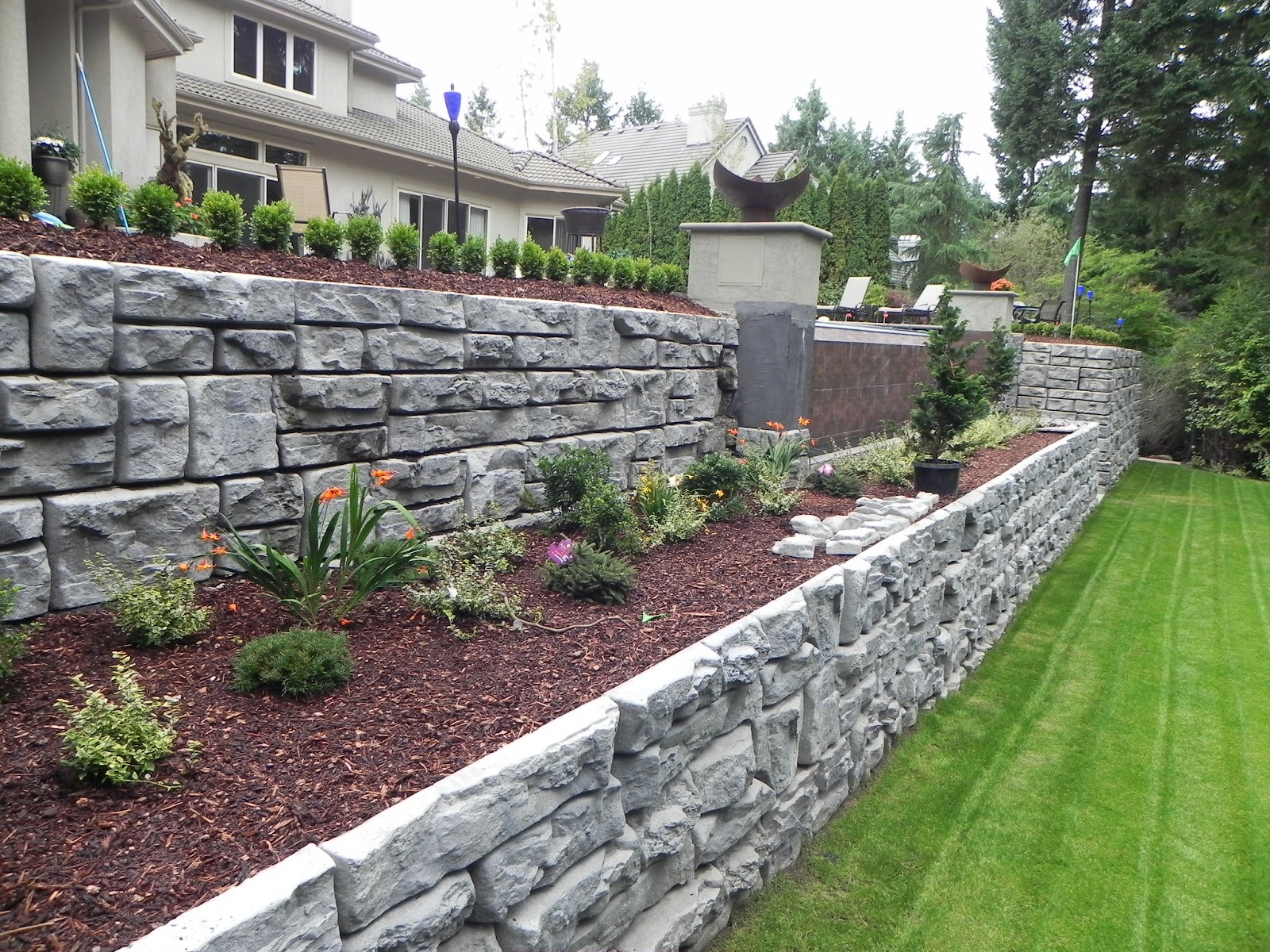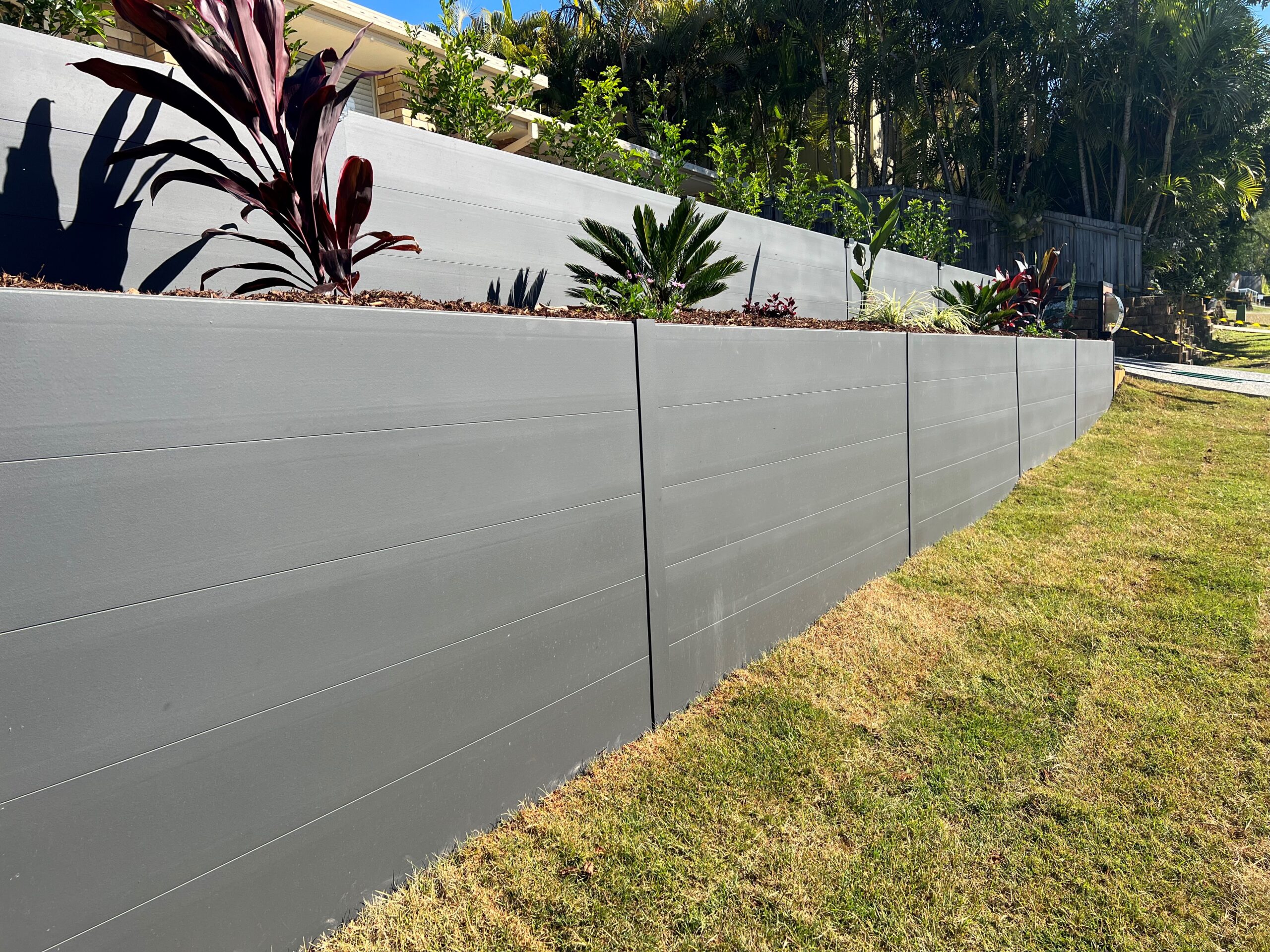Enhancing Home Security: The Duty of Retaining Walls in Dirt Retention and Erosion Control
Preserving walls stand as silent guardians, playing a crucial duty in dirt retention and erosion control. By discovering the subtleties of different kinds, style considerations, building strategies, and upkeep suggestions associated with preserving walls, a much deeper understanding of their essential role in boosting building stability arises.
Value of Retaining Walls in Stability
The relevance of retaining walls in making certain stability within landscapes can not be overemphasized. Retaining walls play a crucial function in holding back soil, protecting against erosion, and producing level surface areas in sloped areas. By offering architectural assistance, retaining walls aid to rearrange lateral pressure created by dirt, avoiding landslides and slippage. In addition to boosting the visual appeal of a building, retaining walls add to the total safety and security and functionality of outdoor areas.
Keeping walls are especially vital in sloping or irregular surfaces where dirt erosion is a typical incident. Without sufficient support, soil erosion can bring about the destruction of landscapes, endangering the honesty of frameworks and presenting dangers to residents. Keeping walls act as obstacles, maintaining the soil and preventing it from shifting downhill during hefty rains or other environmental stressors.
In addition, preserving wall surfaces provide long-term benefits by reducing upkeep expenses connected with soil erosion and land instability. By purchasing properly designed keeping walls, home owners can ensure the long life and sustainability of their landscapes while advertising a risk-free and aesthetically appealing environment.

Types of Retaining Walls for Erosion Control
Gravity keeping wall surfaces are sturdy frameworks that count on their weight to resist the stress of the dirt behind them. Cantilever retaining wall surfaces, on the various other hand, are designed with a thicker base and use a bar arm to withstand the soil stress.
For taller wall surfaces or where area is a restriction, secured maintaining wall surfaces are usually used. When picking the proper kind of maintaining wall for erosion control, elements such as soil composition, wall elevation, and website problems need to be very carefully taken into consideration to make certain durable security and performance.
Style Factors To Consider for Soil Retention
Incorporating the concepts of architectural engineering and environmental sustainability is essential when taking into consideration layout elements for effective soil retention remedies. When creating for soil retention, it is essential to examine the particular requirements of the site, consisting of soil make-up, water drainage patterns, and incline stability. The elevation and place of the retaining wall surface are vital factors that affect the overall layout. Engineers have to also take into consideration the pressure applied by the kept dirt and potential side loads to make sure the structure's stability with time.
Furthermore, the material selection for the maintaining wall surface is important in enhancing durability and performance. Concrete, timber, gabion baskets, and natural rock are usual products utilized in preserving wall construction, each with its distinct advantages and considerations. Correct water drainage mechanisms, such as weep holes and French drains pipes, need to be integrated into the design to stop water accumulation behind the wall, which can bring about architectural failure and disintegration.
Building And Construction Methods for Maintaining Wall Surfaces
When implementing layout factors to consider for efficient soil retention, the building and construction techniques for maintaining wall surfaces play an important function in making sure structural integrity and long-term stability. One usual method is the gravity wall, which counts on the weight and mass of the wall surface itself to resist the stress of the maintained soil.
Another extensively utilized construction strategy is the cantilevered wall, which makes use of a concrete slab foundation that prolongs backwards right into the kept dirt. This style provides this added stability and is ideal for medium to high retaining wall surfaces. For taller structures, strengthened soil methods such as making use of geogrids or dirt nails can be employed to improve the wall's toughness and stability.

Upkeep Tips for Home Security
To ensure lasting property stability, regular upkeep methods are important for protecting the honesty of protecting against and preserving walls disintegration issues. Cleaning the surface area of the keeping walls can also help preserve their architectural integrity by getting rid of dust, debris, and vegetation that might compromise the wall over time.
In enhancement to aesthetic inspections and cleaning, it is very important to examine the drain systems connected with the retaining wall surfaces. Ensuring that drains are free from blockages and operating Going Here correctly can prevent water build-up behind the wall surfaces, which can bring about stress and possible failure. Appropriately operating drain systems are essential for managing water circulation and reducing the danger of disintegration.
Consistently keeping and checking preserving walls according to these pointers can prolong their life-span and contribute to the overall stability of the residential or commercial property.
Verdict
Finally, keeping walls play a vital duty in enhancing home stability by avoiding dirt disintegration and maintaining dirt in position. By using different sorts of maintaining wall surfaces and thinking about style and building and construction strategies, homeowner can effectively control disintegration and preserve the stability of their land. Regular upkeep of preserving wall surfaces is vital to make sure lasting stability and security versus disintegration. Effectively built and kept keeping walls are vital elements in maintaining property security.
For taller wall surfaces or where space is a restriction, anchored keeping wall surfaces are commonly utilized. These walls utilize cable televisions or strips that are anchored right into the dirt or rock behind the wall surface to offer added assistance. When picking the appropriate type of retaining wall surface for disintegration control, her latest blog aspects such as soil composition, wall height, and website conditions have to be thoroughly taken into consideration to guarantee long-lasting stability and efficiency.
One common method is the gravity wall, which depends on the weight and mass of the wall surface itself to stand up to the stress of the preserved dirt. Cleaning up the surface area of the keeping wall surfaces can additionally aid keep their architectural stability by eliminating dust, particles, and vegetation that might weaken the wall over time.